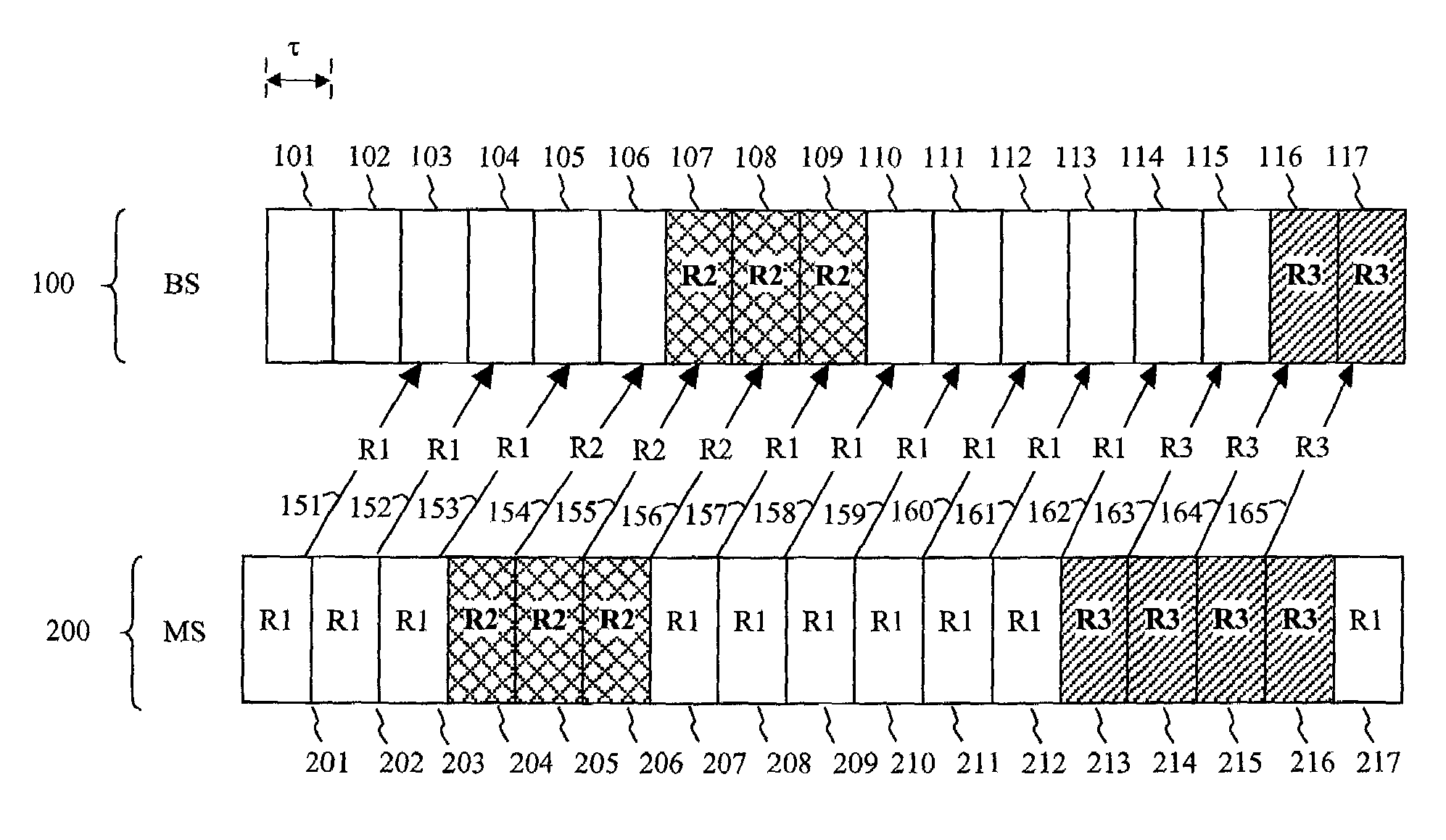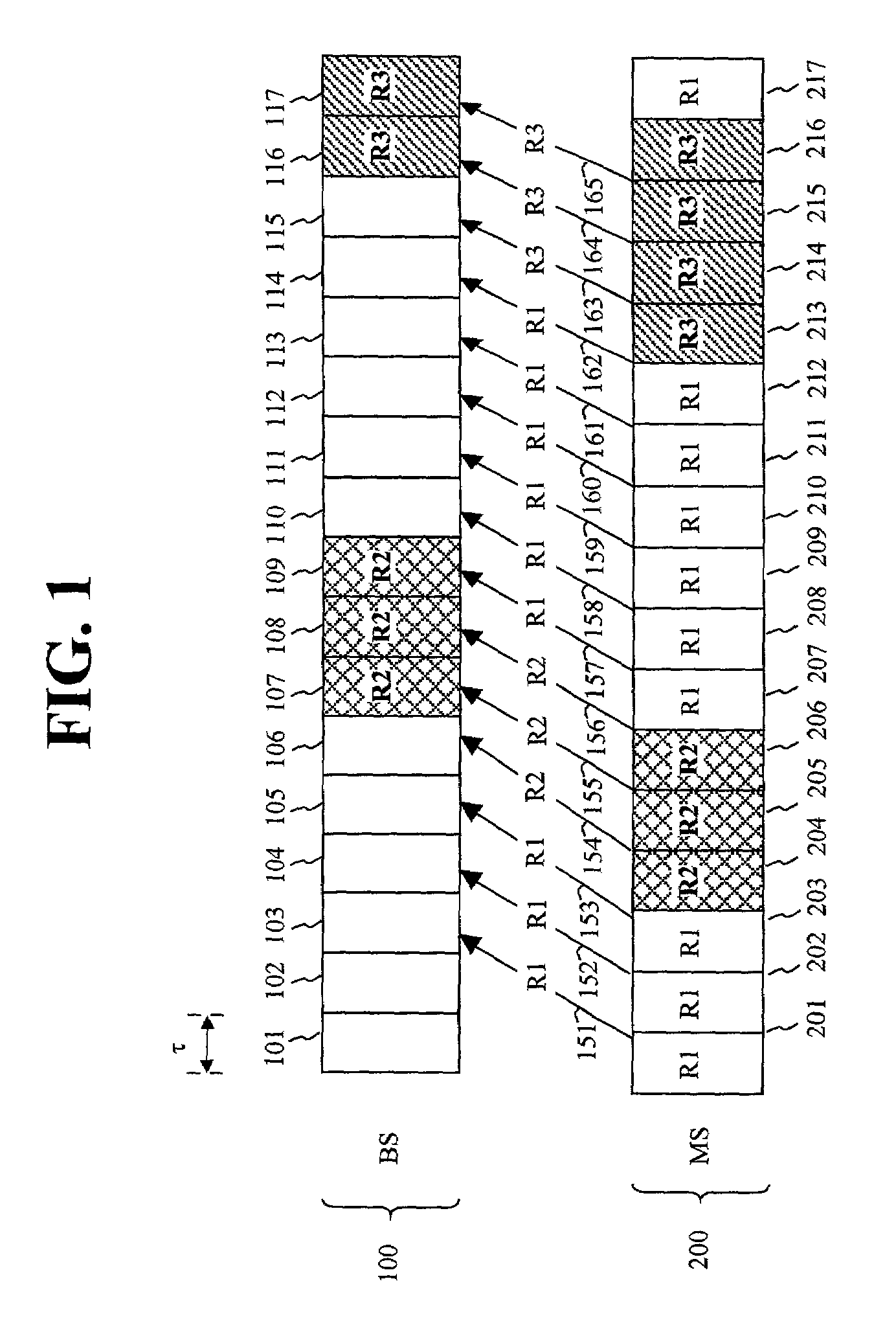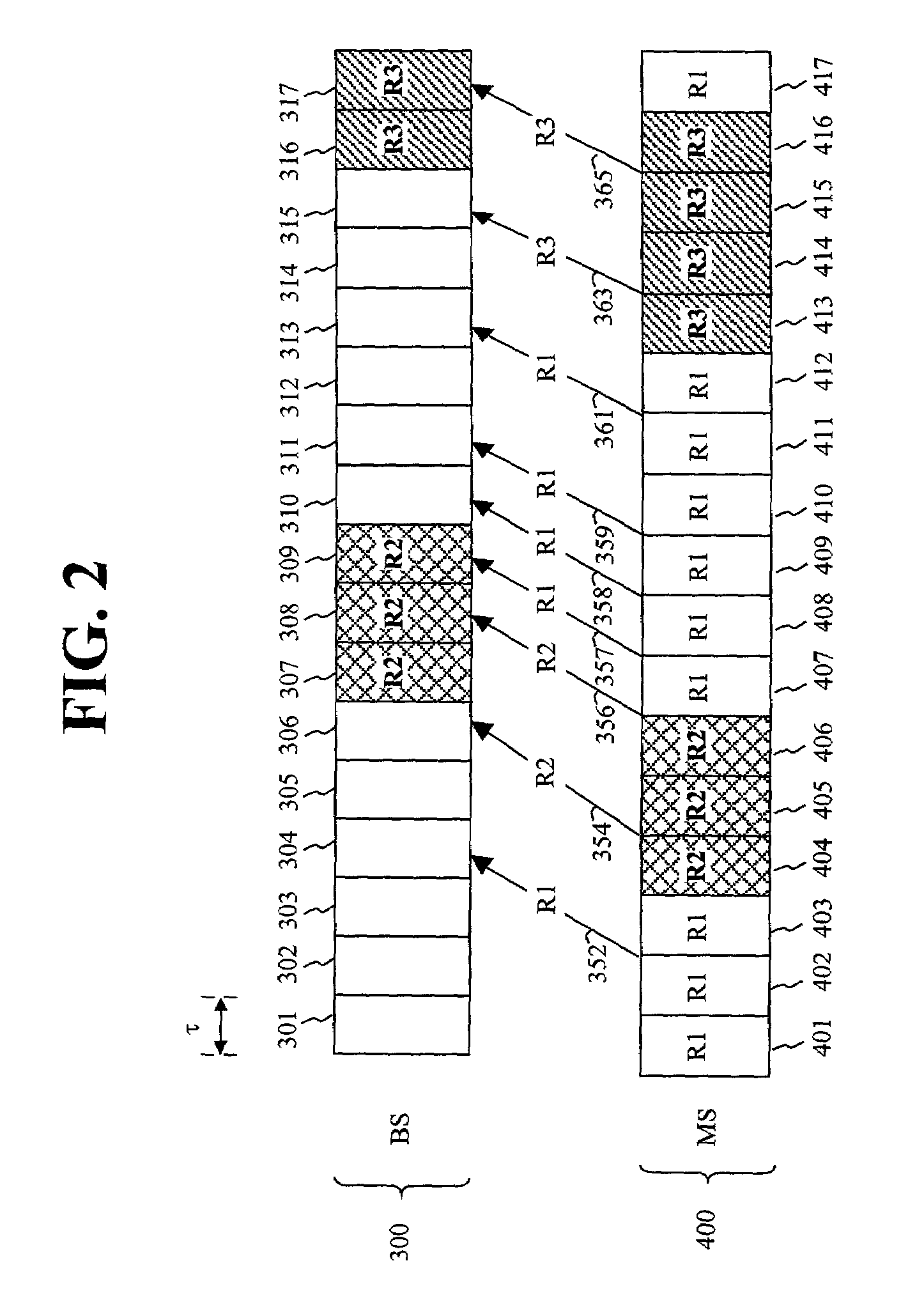Variable rate channel quality feedback in a wireless communication system
- Summary
- Abstract
- Description
- Claims
- Application Information
AI Technical Summary
Benefits of technology
Problems solved by technology
Method used
Image
Examples
Embodiment Construction
[0014]FIG. 2 shows one exemplary embodiment for providing variable rate channel quality feedback according to the principles of the invention. By way of example only, this scheme will be described in the context of wireless transmission according to the 1x-EV-DO (data only) standard, but the teachings set forth herein are not at all limited to just this particular wireless implementation.
[0015]More specifically, FIG. 1 shows a signaling diagram between a base station (BS) and a mobile station (MS). The data channel 300 for the downlink from the base station to the mobile station is divided into time slots 301-317, each of which has a duration τ, e.g., 1.67 milliseconds. In the example shown in FIG. 2, time slots 301-306 and 310-315 are not carrying transmissions from the base station to the mobile station. However, the base station is transmitting to the mobile station during time slots 307-309 and during time slots 316-317. From the perspective of the mobile station, the uplink con...
PUM
 Login to View More
Login to View More Abstract
Description
Claims
Application Information
 Login to View More
Login to View More - R&D
- Intellectual Property
- Life Sciences
- Materials
- Tech Scout
- Unparalleled Data Quality
- Higher Quality Content
- 60% Fewer Hallucinations
Browse by: Latest US Patents, China's latest patents, Technical Efficacy Thesaurus, Application Domain, Technology Topic, Popular Technical Reports.
© 2025 PatSnap. All rights reserved.Legal|Privacy policy|Modern Slavery Act Transparency Statement|Sitemap|About US| Contact US: help@patsnap.com



